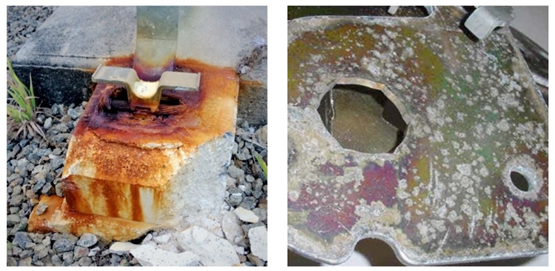Cigre Australia
empowering
networking
global know-how
WG D1.71 – “Understanding and mitigating corrosion”.
Corrosion is a natural process that is continuously active and impacts much of what we produce and use in the electrotechnical community. Due to the distributed nature of equipment and its criticality, the impact of corrosion can be costly and threaten the reliability of power delivery. In recognition of the importance of this impact, WG D1.71 has produced Technical Brochure 765 “Understanding and mitigating corrosion” led by Joe Tusek, who was a recent convenor of Australian Panel D1. The brochure provides a comprehensive overview of the basics of corrosion and is a valuable reference document.
In most developed countries the cost of corrosion has been estimated at around 3.4% of global Gross National Product. It is also estimated that one quarter of the cost could be saved if the best corrosion practices were applied. Electrotechnology is using an ever-greater variety of materials and placing them in novel and sometimes aggressive environments. There are also new manufacturing techniques and processes that create unique circumstances which at times result in unexpected corrosion problems. Thus, the industry faces old and new threats from corrosion that impact asset performance, service life and cost of ownership.
Throughout the Technical Brochure, examples are provided of different corrosion processes in action, either from the electrotechnical community or common situations with which the reader is likely to be familiar. Pictures of a couple of examples are shown in Figure 1 below.

Figure 1 – Examples of corrosion, galvanic processes between a copper earth strap and copper cable joined by a galvanized plate (left), and pitting on a steel surface (right)
The brochure provides a resource for matters relating to corrosion. In doing so, it should be acknowledged that corrosion is its own discipline and has its own technical community and terminology.
The brochure provides an introduction to corrosion and its mitigation, it defines the terminology and concepts that can be used for effective communication of corrosion issues. It is not endeavouring to make the reader a corrosion expert. Rather, it enables the reader to be well informed in relation to corrosion and to understand when a problem requires expert input. The need for corrosion specialists is continuing and the use of these experts is always recommended when the risk or impact warrants it.
The brochure contains 12 chapters:
- Introduction to Corrosion
- The corrosion process
- Predicting corrosion reactions
- Types of metallic corrosion
- Corrosion in natural environments
- Corrosion control by design improvement
- Corrosion properties of metals
- Environmental modification
- Cathodic and anodic protection
- Metallic and inorganic coatings
- Organic coatings and linings
- Bibliography
The content of the brochure is highly relevant to design and maintenance of many types of electrical power equipment such as generators, transformers and transmission lines.
The publication is free to members and €300 for non-members.
